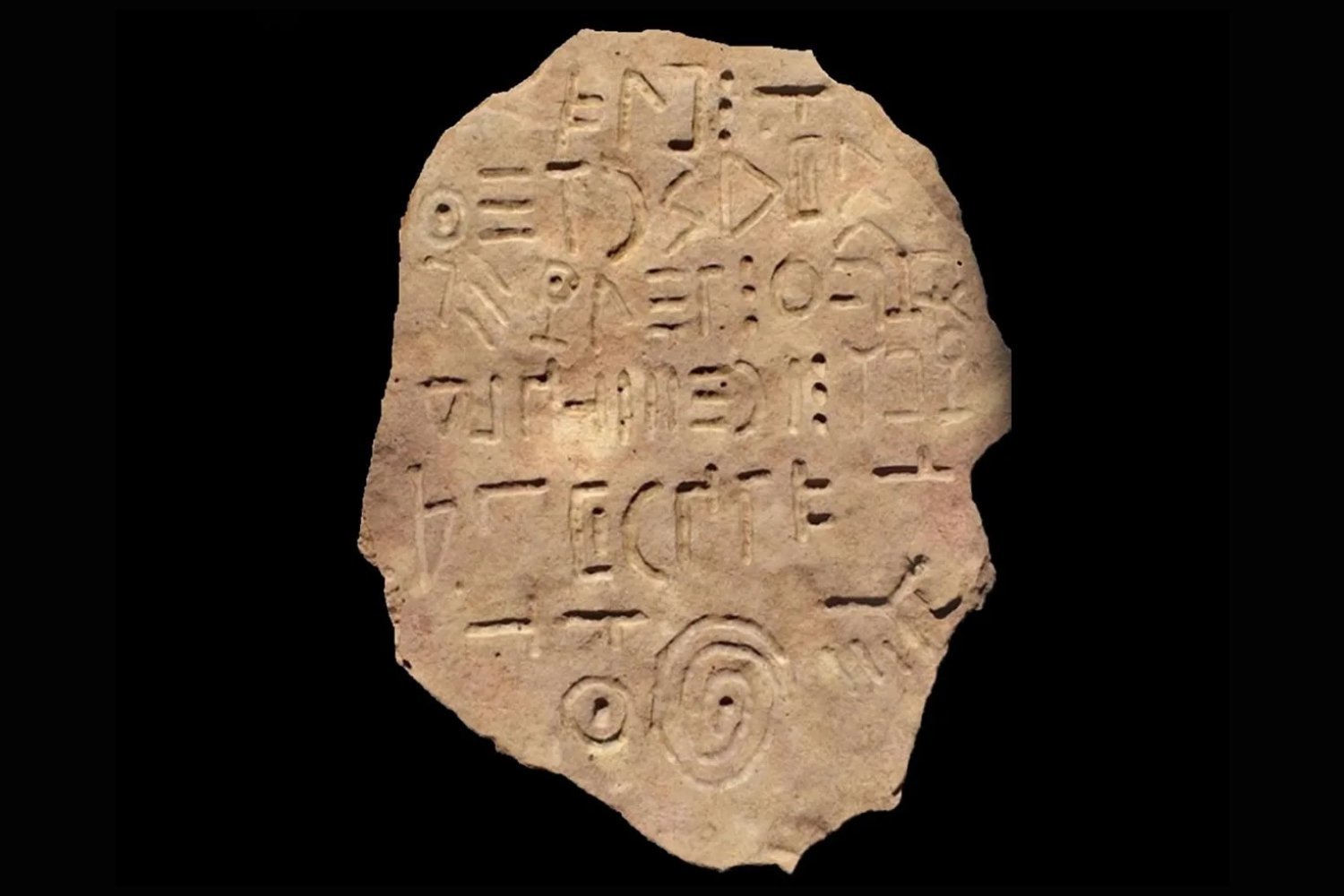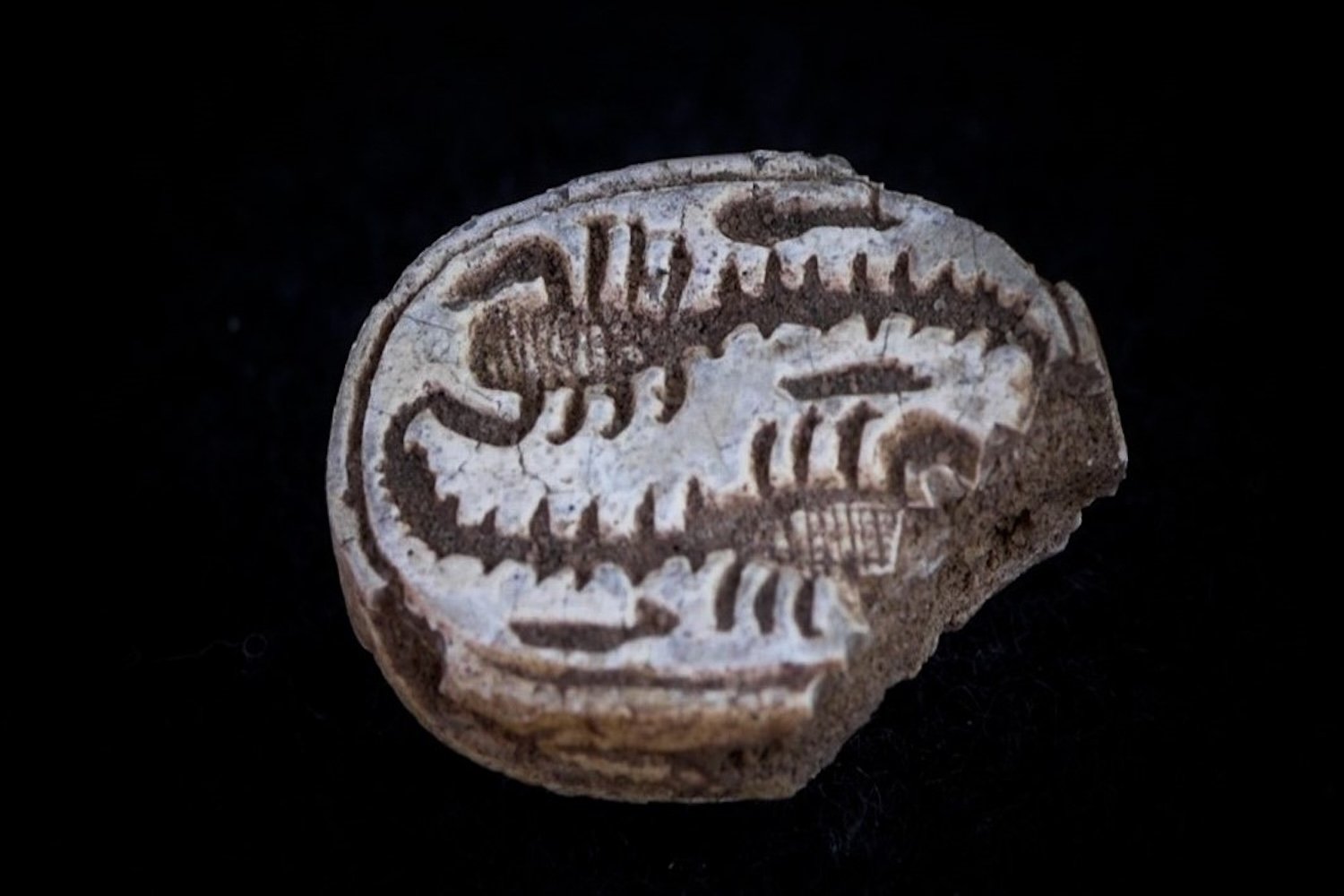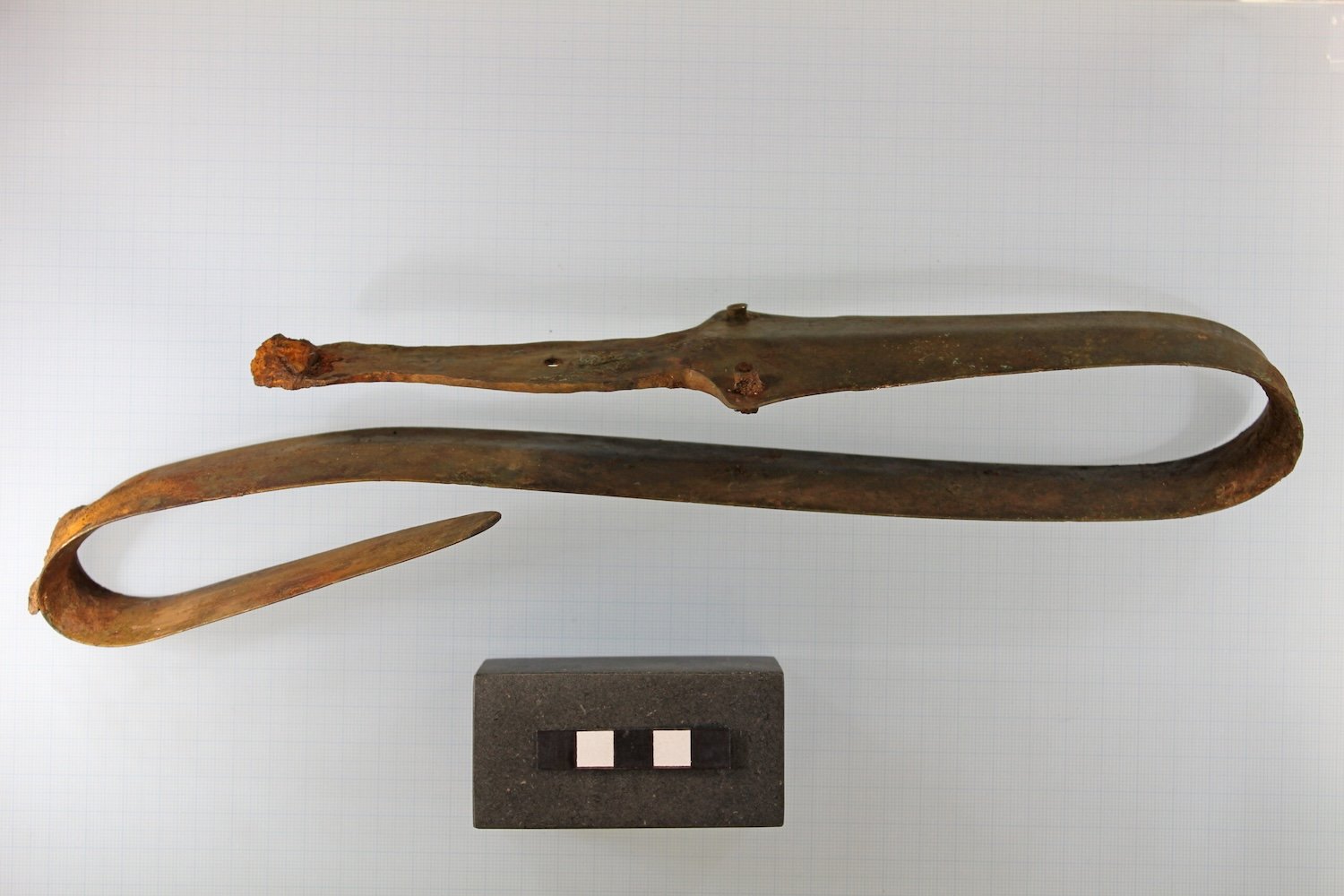The discovery of a stone tablet bearing an unknown script in Georgia has sparked excitement among researchers, potentially rewriting the history of ancient Caucasian writing. Unearthed near Bashplemi Lake in 2021, the inscription, known as the “Bashplemi inscription,” features 39 unique characters, possibly including numerals and punctuation, arranged in seven horizontal lines.
A recent study published in the Journal of Ancient History and Archaeology suggests the inscription could represent an ancient local Georgian script. If confirmed, and if the artifact’s tentative dating to the Early Iron Age or earlier holds true, this discovery could revolutionize our understanding of Georgian writing’s origins.
Unraveling the Enigma: A Closer Look at the Bashplemi Inscription
The researchers, from Georgia and France, confidently assert that the symbols on the tablet constitute a script, possibly even an alphabet. While the text remains undeciphered, some characters bear resemblance to scripts from the Middle East, India, Egypt, and even West Iberia. Similarities are also noted with Phoenician, Aramaic, and Greek scripts. Intriguingly, the closest parallels are with Caucasian scripts, including Georgian Mrgvlovani, Albanian, and proto-Georgian.
The directionality of the script remains a puzzle. The researchers suggest it could be read left-to-right, right-to-left, or even in a boustrophedon pattern (alternating directions with each line), though this last possibility is considered less likely. Further complicating matters, the tablet appears to be partially broken, suggesting the inscription might be incomplete.
A Laborious Creation: Material and Technique
Mineralogical analysis reveals the tablet is carved from local basalt, a remarkably hard stone. The researchers believe the scribe(s) first marked the symbol outlines with a conic drill, then connected these marks with a smooth, round-headed tool, akin to a connect-the-dots puzzle.
This laborious process, combined with the possible presence of numbers, hints at the inscription’s potential significance. The researchers speculate it could document military spoils, a divine offering, or details of a major construction project. The stone’s local origin and the script’s similarities to other Caucasian scripts further support the possibility of a local Georgian provenance.
Redating History: The Implications for Georgian Writing
While unable to pinpoint the tablet’s exact age, the researchers propose a Late Bronze or Early Iron Age origin, based on the inscription’s style and other artifacts found at the site. This dating, if accurate, would be groundbreaking.
The oldest known examples of Georgian and other Caucasian scripts date to after the region’s adoption of Christianity in the early fourth century. The Early Iron Age, beginning around 1000 BCE, means the Bashplemi inscription could predate these known examples by over a millennium.
Authenticity and Future Research
The researchers believe the tablet is authentic, citing the locals’ well-intentioned but potentially damaging attempt to clean the surface with an iron object, leaving noticeable scratches. They argue a forger would be unlikely to compromise an artifact’s apparent authenticity in this way.
The Bashplemi inscription holds the promise of reshaping our understanding of the history of writing in the Caucasus. Further archaeological investigation is crucial to confirm the tablet’s age and decipher its intriguing message. This discovery has the potential to “change the stereotypes about certain historical phenomena, as well as key aspects of the origination and development of the scripts in Caucasus,” as the researchers conclude.
Study published in the Journal of Ancient History and Archaeology
Christianity adopted in Georgia
Early Iron Age











